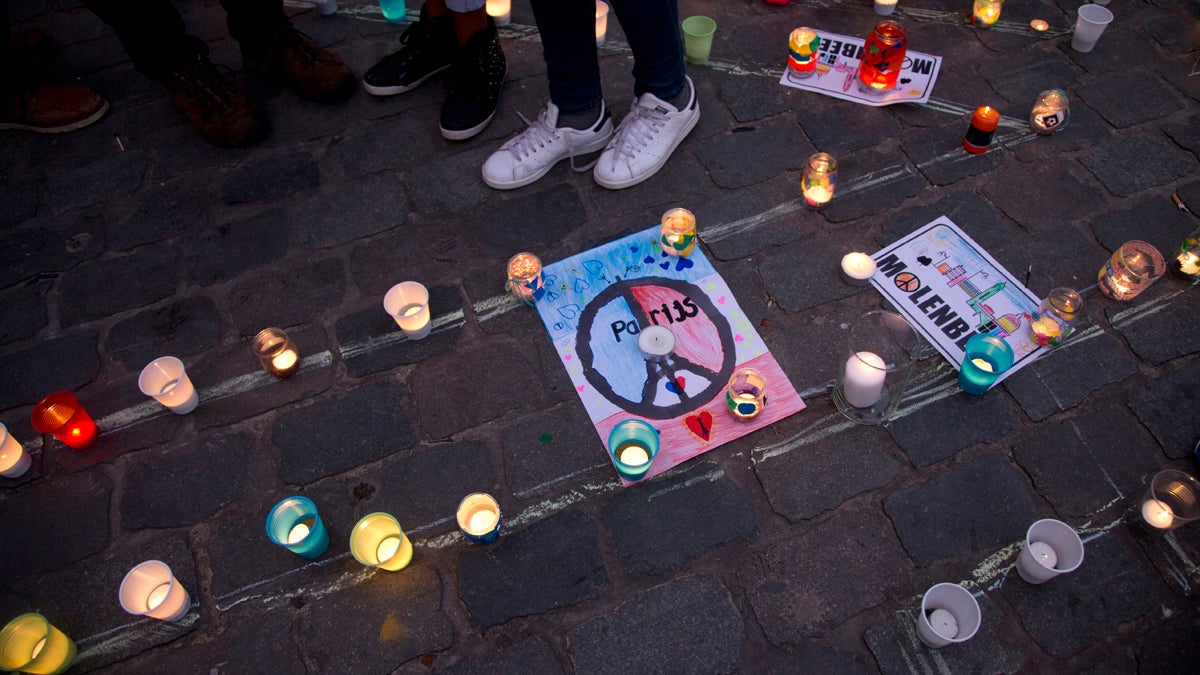A city in mourning: Grief in the wake of the Paris attacks
Listen
People stand next to candles and banners during a candlelight vigil for the Paris attacks in the town square of Molenbeek
In light of the recent tragic events in the Middle East and Paris, global citizens have been uniting in their shared grief. Many have expressed their shock and sadness differently, but the five stages of grief, denial, anger, bargaining, depression, and acceptance, are an emotional rite of passage that many people still expect to work through. However, psychologist George Bonnano’s research contradicts the traditional model.
“Most human beings are resilient.” He recently told Pulse host Maiken Scott.
He describes sadness as a necessary and functional emotion. It helps individuals to pause, reflect and appraise their environment, one in which their loved ones are gone. He noticed that sadness isn’t a constant feeling. It oscillates.
“Sadness comes and goes because it’s an emotional reaction. We don’t notice that because we aren’t paying attention.” Bonnano explains. “It’s an occasional feeling.”
For example, people who are in the throes of sorrow still have the capacity to laugh. These emotions were written off as part of the “denial” stage in the traditional model. But Bonnano could not find any literature that would delve into what’s going on. But nevertheless he is in awe of his research.
Bonnano found in his research that sadness is most intense during the first weeks and months of grief, but then gradually lessens over time. People may likely still feel sadness years later, but it’s an occasional feeling.
“People are capable of moments of joy when they are suffering greatly and it is a tremendous sign of how resilient we are,” Bonnano concludes.
The recent terror attacks have left many to deal with biting sadness associated with it. But Bonnano refers to such tragic events as “potentially traumatic.”
He claims that we experience trauma-inducing events on a regular basis but how we react to them varies greatly. Most people do not develop long-lasting psychological issues following a potentially traumatic event, and often we even forget about them. While conducting his research, Bonnano asked his subjects if they have ever faced stressful situations such as being robbed at gun point, or witnessing an individual’s death. Most of the interviewees would say no, but later on would suddenly recall an incident where they did see such an incident. It first astounded Bonnano that people could forget such weighty life events. He soon realized that the significance of the events depended on several factors such as levels of stress, genetics, and the context of the event.
“One event may be enormously traumatic for one person but not as traumatic for the other person who experienced almost the same thing,” states Bonnano.
WHYY is your source for fact-based, in-depth journalism and information. As a nonprofit organization, we rely on financial support from readers like you. Please give today.



